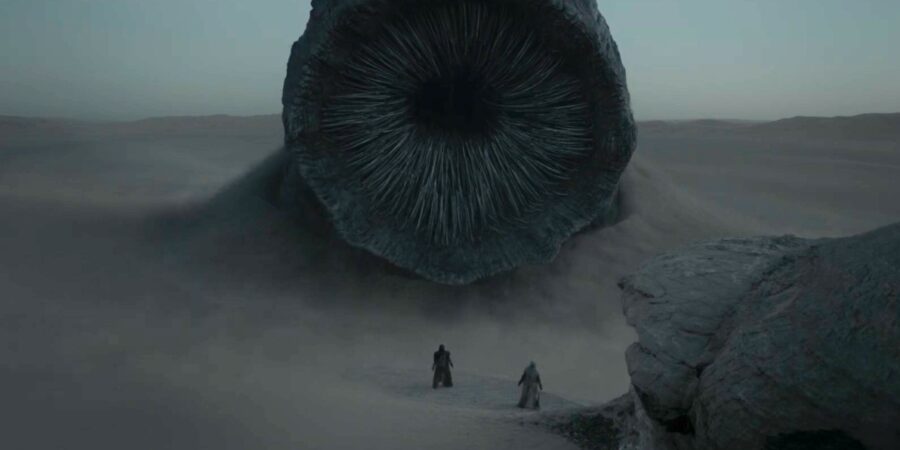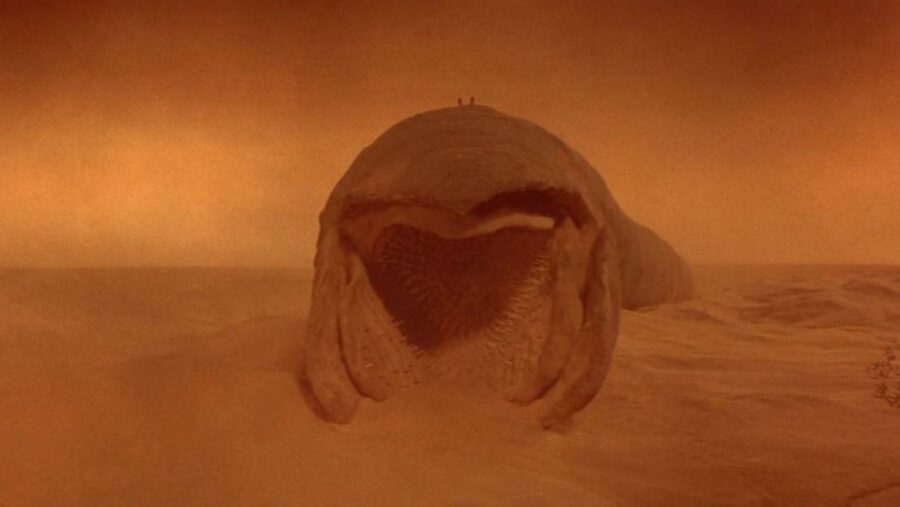Scientists Name Discovery After Dune’s Most Terrifying Creatures

In Dune, one of the most epic sci-fi sagas ever written, the term “Shai-Hulud” is uttered with a tone of terror, wonder, and admiration. In the Dune world, it’s the word for a sandworm that the Fremen people believe to be the physical embodiment of their creator. But in real life, scientists are giving new meaning to the term “Shai-Hulud” after naming a 500-million-year-old worm after the horrifying sci-fi creature.
According to Science Alert, a new creature was discovered in a geological formation between Utah and Idaho. These fossils of an ancient seaworm date back 505 million years to the Cambrian period (that’s about 300 million years before the Jurassic period) and perfectly preserve a palm-sized worm with star-shaped stiff bristles (called chaeta) on its back.
In a way, we’ve had alien worlds beneath our feet.
-Rhiannon LaVine, paleobiologist from the University of Kansas
Showing off their love for sci-fi, scientists aptly named this new worm discovery Shaihuludia shurikeni, after the sandworms in Dune and the Japanese word for “throwing star,” which is “shuriken.”
This discovery, made by a collaborative research team from the United States and Germany, offers a fascinating glimpse into Earth’s distant past. The ancient worm, much smaller than its Dune-inspired counterpart, fits comfortably in the palm of one’s hand.
Scientists have named a 500 million year old worm species they discovered Shaihuludia shurikeni, after the Shai-Hulud: the massive worms of Dune.
Upon its initial discovery, scientists weren’t sure that they were dealing with an animal fossil, believing the worm to be a mineral formation because of the radial blade patterns etched into the surrounding rock. But after meticulous analysis, they determined it was not only actually an animal fossil, but proof of a previously unknown species of worm, making it the perfect fit to introduce Dune lore into the scientific space.

Geobiologist Julien Kimmig, associated with the State Museum of Natural History in Germany, commented on the unique preservation of the Dune-inspiring fossil. He highlighted the presence of an iron oxide blob, indicating the organism’s decomposition prior to fossilization.
To learn more about this ancient species, the research team employed an array of advanced techniques—including scanning electron microscopy and energy-dispersive X-ray spectrometry—to learn more about the fossil’s structure, chemical composition, and the intricate details of its preservation.
The naming of Shaihuludia shurikeni is a testament to the enduring influence of Dune and other science fiction creations and their ability to inspire exploration and understanding in science.
This newfound species, categorized as an annelid, or segmented worm, sheds light on the ancient marine ecosystems that existed during the Cambrian period. This discovery holds particular significance as the Spence Shale Lagerstätte site, where the sea worm was found, previously yielded only a single annelid species.
The implications of this find extend beyond the newly Dune-named worm. By reclassifying another fossil found in the same region, the researchers better understood the Cambrian-era marine ecosystems. This area of North America was once dominated by an array of ancient creatures, including trilobites, brachiopods, mollusks, and early arthropods.
“In a way, we’ve had alien worlds beneath our feet,” Rhiannon LaVine, a paleobiologist affiliated with the University of Kansas in the United States, mused, encapsulating the sense of wonder and exploration that the study of ancient fossils can evoke.
As humanity continues to delve into the depths of Earth’s history, each new discovery offers a tantalizing glimpse into the evolution of life on our planet. The naming of Shaihuludia shurikeni is a testament to the enduring influence of Dune and other science fiction creations and their ability to inspire exploration and understanding in science.












